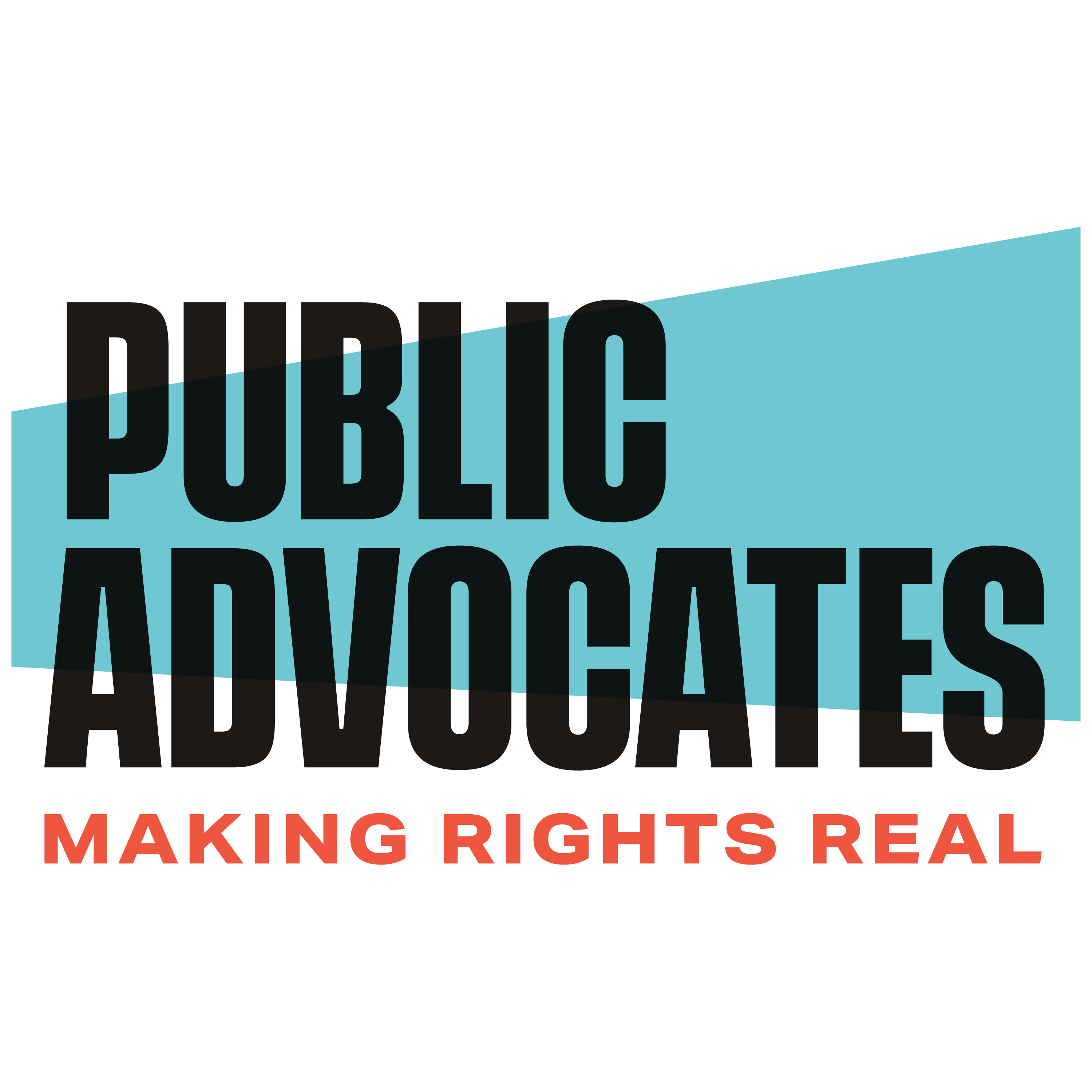Updates on California’s “System of Support” for Schools and Districts
We at Public Advocates want community partners and other interested stakeholders to know about support and resources that schools and school districts are receiving to close equity gaps for students under California’s new “System of Support” under the following programs:
1) Differentiated Assistance,
2) Low Performing Student Block Grant, and
3) Comprehensive Support and Improvement.
There are timelines moving on each of these programs. We hope you find this information helpful to be able to engage and foster more relevant and effective supports for California’s students!
1) Differentiated Assistance
California has a new public school accountability system that provides school districts, charter schools and county offices of education with support and assistance. School district and school performance are reported in a new tool called the California School Dashboard. The Dashboard shows performance of different student groups across multiple state priority areas measuring academics and school climate. School districts with one or more student groups that have not met the performance standard in two or more of the state priority areas, have been designated for level 2 support, called: “Differentiated Assistance.”
Each school district must partner with their respective county office of education (COE) or a different agency to conduct a root-cause analysis of the equity and performance gaps for those student groups identified and make a plan to address these issues next year in its LCAP. (For some districts, this is a continued partnership with their county because they are in their second year of Differentiated Assistance.)
For more information about Differentiated Assistance generally, see https://www.cde.ca.gov/sp/sw/t1/csss.asp
For more information on the Differentiated Assistance designation for all school districts, see here
2) Low-Performing Student Block Grant
California will provide additional funds to school districts through the Low-Performing Student Block Grant. The allocation will be at a rate of $1,976 per eligible student. To be eligible, the student must have scored at the lowest levels on both math and English language arts tests. Additionally, eligible students must not already be supported through supplemental funding under the Local Control Funding Formula (LCFF) (i.e., low-income, English learner or foster youth) or through special education services.
Each school district must also develop a plan for spending the Low-Performing Student Block Grant funds over the next two school years to improve student performance. The funds can be spent on supporting academic achievement generally, but the plan must say how it will aid eligible students that the grant was meant to target and it must be aligned with the LCAP.
For more information about the grant generally, see https://www.cde.ca.gov/fg/aa/ca/lpsbg.asp
For more information on the number of eligible students and associated funds for all school districts and charter schools, see here
3) Comprehensive Support and Improvement
The federal government has a new school accountability requirement that designates struggling schools for support and assistance. Qualifying schools either 1) have a graduation rate below 67% or 2) are in the bottom 5% of Title I schools based on 2018 California School Dashboard results. Schools that fall into either category are flagged as requiring “Comprehensive Support and Improvement” (CSI). Each school district that applies for CSI funding will receive $166,000 for each school in that district that meets either criteria.
To be placed in the bottom 5% of Title I schools, the school must have either 1) all red indicators, 2) all red but one indicator of any other color, 3) all red and orange indicators or 4) five or more indicators where the majority are red. Indicator results can be found on the California School Dashboard website and address: suspension rate, graduation rate, chronic absenteeism, college/career readiness, English language arts, mathematics and English learner progress.
Each CSI district school will partner with its school district to develop and implement a comprehensive plan to address their respective issues. The school district must submit an application to receive around $166,000 per school for the 2019-20 school year to implement each plan. Additionally, the county office of education will provide technical assistance and support.
CSI School Plan Requirements:
-
- Each school’s CSI plan must be created as part of the School Plan for Student Achievement (SPSA) development process at the school site level.
- The CSI plans must be aligned with your school district’s Local Control and Accountability Plan (LCAP) and rely heavily on your community’s input and feedback.
- Each plan must
- be created in partnership with local stakeholders
- be informed by the Dashboard indicators
- be based on a needs assessment,
- include evidence-based interventions, and
- identify and address resource inequities, which may include a review of school and district level budgeting.
- CSI funds are limited to one-time spending intended to have long-term impacts (as opposed to ongoing costs like funding for permanent staff). Examples might include professional development for English Learner teachers or other focus areas, time for collaboration of school teams, consultants to help shift culture around engagement of students and families, etc.
For more information about CSI generally and the list of identified schools, see https://www.cde.ca.gov/sp/sw/t1/csi.asp
For more information on the number of CSI schools and associated funds for all school districts and charter schools, see here
Why is community engagement critical?
One of the key purposes of the new state system of support is to ensure that districts “improve outreach and collaboration with stakeholders” so that LCAP plans for needed improvements reflect the needs of pupils and the community, especially for historically underrepresented or low-achieving populations. Community members are often experts on their local schools’ needs. This engagement will help foster more relevant and effective solutions to address the issues flagged in each school district.
Call to action
1) Differentiated Assistance
- Connect with your district and county staff and request to be updated and involved in the plan to improve outcomes for focus student groups based on Differentiated Assistance.
- Show up at your school district’s LCAP meetings to ask what the district is doing to improve student outcomes, share your perspective, and ensure that the most effective and relevant interventions are carried out in your school district.
2) Low-Performing Student Block Grant
- Your school district must report to the state Superintendent of Public Instruction concerning the adopted Low-Performing Student Block Grant plan by March 1, 2019.
- This plan must be discussed and adopted at a regularly scheduled meeting of your school board and must also align with your school district’s LCAP.
- Before the March 1st deadline, connect with your district staff and request to be updated and involved in the creation of the plan for the grant’s funds.
- Speak out to your school board to provide feedback on this plan.
- Monitor how the district is spending these funds and implementing the plan to ensure improved student outcomes.
3) Comprehensive Support and Improvement
- If you, your children or someone you know attends or works at a school flagged for support, connect with your school leader and School Site Council and ask to be involved in your school’s plan for improvement.
- Connect with your district staff to ensure that your district will be applying for CSI funding and partnering with local stakeholders to craft their plans.
- Furthermore, connect with your district staff and show up at your district’s LCAP meetings to ensure that the CSI plans are properly reflected in the LCAP and that you are involved in the successful implementation of CSI plans at the school district level.
Questions? Reach out to us at info@publicadvocates.org
Is this helpful? Please let us know.

